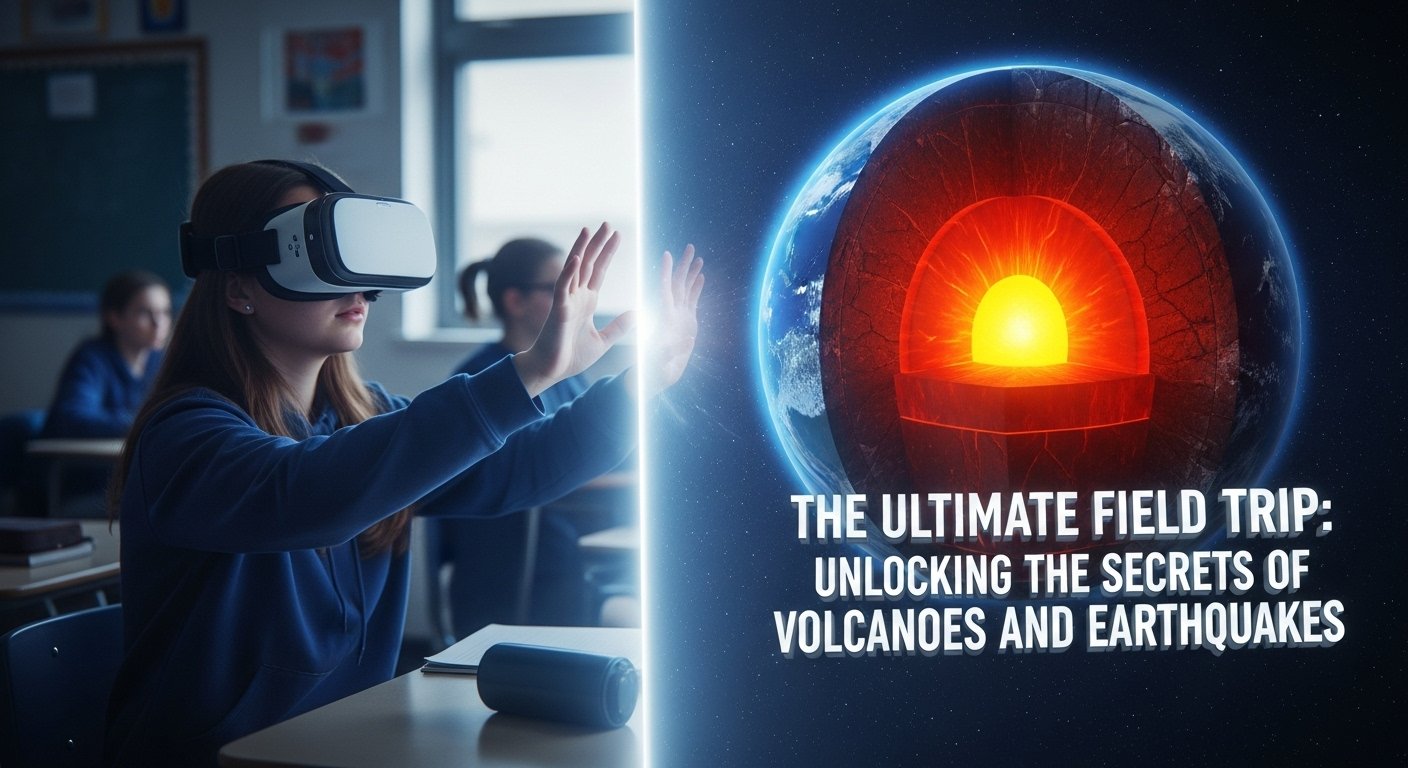The Ultimate Field Trip: How Virtual Reality Unlocks the Secrets of Volcanoes and Earthquakes
Have you ever felt it? That subtle, unsettling shudder of the ground beneath your feet. Living in a seismically active region, many of us know the feeling—a humbling, awe-inspiring reminder of the colossal forces constantly churning deep within our planet. For centuries, these forces were the stuff of myths, their true nature hidden from view. But what if you could peel back the Earth’s crust like an orange? What if you could stand at the base of a tectonic plate as it grinds against another, or float safely within a chamber of molten rock? Today, this is no longer a fantasy. In fact, this is the incredible power of Virtual Reality.
For students, educators, and anyone with a spark of curiosity, Virtual Reality is revolutionizing our understanding of geology. It’s a seismic shift away from the flat, static diagrams of old textbooks and into a dynamic, immersive world where we can experience the planet’s most powerful phenomena firsthand. This isn’t just about watching a video; consequently, it’s about developing an intuitive, visceral understanding of the science behind storms of rock and fire. By strapping on a headset, we can embark on the ultimate field trip—a journey to the heart of volcanoes and the source of earthquakes—and in doing so, truly appreciate the living, breathing planet we call home.
Why Geology Needs to Break Free from the Flat Page
Let’s be honest: learning geology from a textbook can be tough. The book asks us to visualize immense, three-dimensional processes—like tectonic plates subducting or magma plumes rising—based on a few arrows on a 2D diagram. It’s like trying to understand how a car engine works by only looking at the owner’s manual. While you can memorize the parts, you don’t truly grasp how they interact in a dynamic system.
This is precisely the challenge Virtual Reality was made for. Geology is a science of scale, pressure, and deep time; all of these are incredibly difficult to represent on a flat screen or page. Immersive technology, however, shatters these limitations:
- First, it provides a sense of scale. You can shrink down to the size of a molecule or grow large enough to hold the entire planet in your hands.
- Furthermore, it visualizes the invisible. This tech makes forces like pressure and convection visible, often representing them as flowing particles or color gradients.
- Finally, it manipulates time. You can watch millions of years of continental drift in a matter of minutes or slow down a volcanic eruption to a frame-by-frame analysis.
By using these powerful simulated environments, we move from memorizing definitions to building a deep, intuitive understanding of the interconnected forces that shape our world. This is the power of immersive learning.
AI Study Tips for High School to College Transition | Boost Learning in 2025
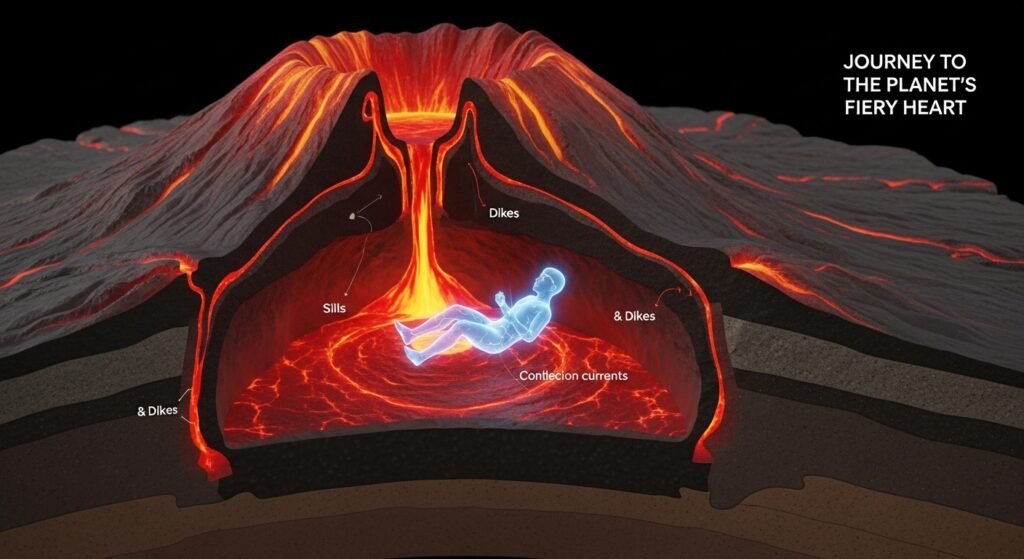
Journey to the Center of the Earth: Deconstructing a Volcano in VR
Imagine putting on a VR headset and embarking on a mission to explore a volcano from the inside out. This isn’t just a passive tour; on the contrary, it’s an interactive scientific expedition that revolutionizes geoscience education.
Stop 1: The Raging Heart of the Magma Chamber
Your journey begins deep beneath the Earth’s surface, where you find yourself floating in a vast, glowing cavern of molten rock—the magma chamber. In this Virtual Reality simulation, you see the magma not as a static orange blob, but as a churning, dynamic fluid.
- See the Pressure: The simulation visualizes the immense pressure from the surrounding rock as a compressive force. In addition, you can see bubbles of gas forming and rising within the magma, just like in a bottle of soda. This makes the concept of “pressure building” a tangible, visible force.
- Understand Magma vs. Lava: The program teaches you that this molten rock is called magma. It explains that only when it reaches the surface will it be called lava. It’s a simple distinction, but seeing it in context makes it stick.
Stop 2: The Eruption in Slow Motion
Next, you begin to ascend through the volcano’s main vent, or conduit. Time slows down as the eruption begins.
- Witness Different Eruption Types: You can toggle between different scenarios. First, you witness the explosive eruption of a stratovolcano (like Mount St. Helens), where you see the violent expansion of trapped gases that shatters rock. Then, you can switch to a shield volcano (like in Hawaii). The experience is completely different; indeed, you see gentle, effusive flows of runny lava pouring down the sides. This comparative experience provides a level of understanding that a textbook description simply can’t.
- Learn the Anatomy: As you explore, the simulation highlights and labels different parts of the volcano: the conduit, the crater, the caldera. You’re learning the vocabulary in a fully immersive context.
Stop 3: The Aftermath—Destruction and Creation
After the eruption, you can fly over the landscape. You see the destructive power, but you also witness the creative side. For instance, you can watch as the lava cools and solidifies, forming new rock and extending a coastline. You can then fast-forward time to see how, over years, the nutrient-rich volcanic ash breaks down to create incredibly fertile soil, allowing life to flourish again. Virtual Reality makes this powerful geology lesson possible through its unique capabilities. You can learn more about these processes from the USGS Volcano Hazards Program.
AI Study Tips for High School to College Transition | Boost Learning in 2025
Feeling the Fault Line: Making Earthquakes Tangible
For many of us, earthquakes are a terrifying and mysterious force. Virtual Reality gives us the power to demystify them by visualizing the colossal forces at play.
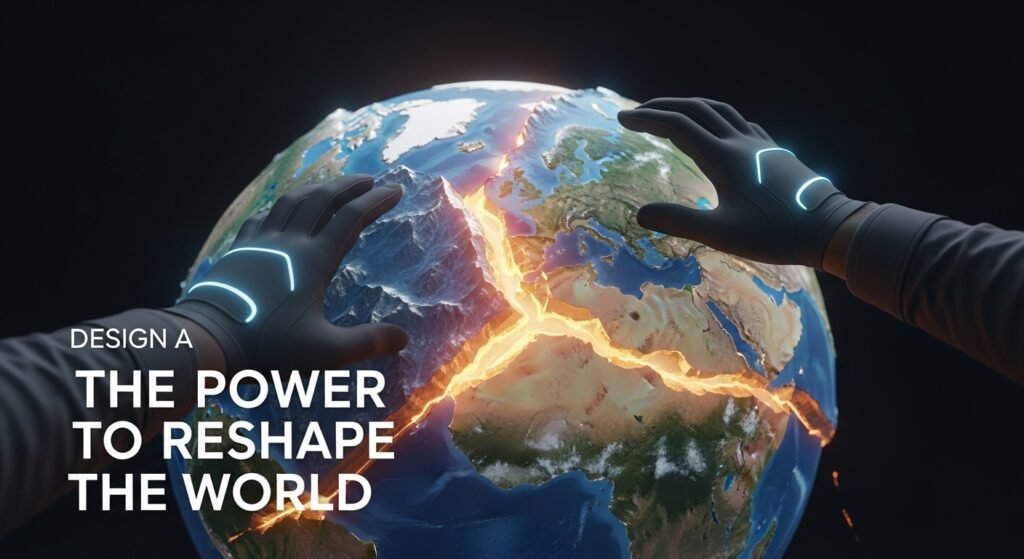
Stop 1: The Puzzle of the Planet
Your next virtual field trip starts in space, looking down at the Earth. Here, you can see the major tectonic plates outlined, looking like a giant, cracked eggshell.
- Interactive Tectonics: With your virtual hands, you can grab the continents and move them. You can pull apart the African and South American plates and see the Mid-Atlantic Ridge, where new crust forms. Similarly, you can smash the Indian Plate into the Eurasian Plate and watch the mighty Himalayas crumple upwards. In five minutes of interactive play, the entire theory of plate tectonics becomes second nature.
Stop 2: Up Close with a Fault Line
Now, you shrink down and the simulation transports you to the San Andreas Fault in California.
- Visualizing Stress: You stand on one side of the fault and see the Pacific Plate trying to slide past the North American Plate. In this VR simulation, the immense stress building up in the rocks is visualized as a glowing, red energy. You can speed up time and watch this energy intensify over decades.
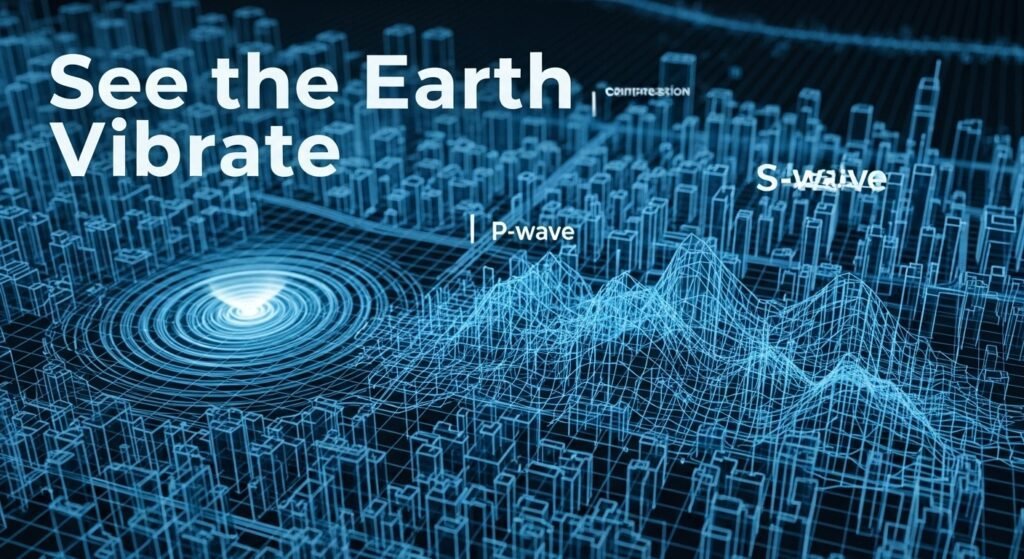
Stop 3: The Rupture and the Waves
Suddenly, the stress becomes too much. The rocks finally snap.
- Elastic Rebound: You witness the “elastic rebound theory” in action as the ground on either side of the fault lurches violently to catch up.
- Seeing Seismic Waves: This is the most incredible part. From the earthquake’s epicenter, you can see the seismic waves radiating outwards in 3D. The P-waves (primary waves) are visualized as a fast-moving compression pulse, like a pulse on a Slinky. Moments later, you see the S-waves (secondary waves) propagating outwards, shaking the ground from side to side. For the first time, you can truly see why an earthquake feels the way it does. This level of insight is something that immersive technology is uniquely suited to provide.
Essential Climate Change Education for Students
Traditional vs. Virtual Geology: A Groundbreaking Comparison
| Feature | Traditional Geology Education | Virtual Reality Geology Education |
| Learning Mode | Passive (reading, listening, watching). | Active (interacting, manipulating, exploring). |
| Perspective | 2D, external view. | 3D, immersive, first-person perspective. |
| Key Skill | Memorization of facts and definitions. | Intuitive understanding of systems and processes. |
| Representation | Static diagrams, simplified models. | Dynamic, complex, and interactive simulations. |
| Accessibility | Limited to what can be drawn or filmed. | Can visit impossible locations (inside a volcano, deep underground). |
Export to Sheets
A Personal Story: The Moment Seismic Waves Finally “Clicked”
I’ll be honest, I struggled with the difference between P-waves and S-waves in my high school Earth science class. I memorized that one was a compression wave and one was a shear wave, but I couldn’t really picture it. In short, it was just abstract jargon I needed to know for the test.
Years later, I tried a simple Virtual Reality geology demo. The program placed me in a landscape made of a 3D grid. First, it sent a P-wave through the grid, and I watched as the grid lines in front of me pulsed, compressing and expanding as the wave rushed past. Then, it sent an S-wave. This time, I watched as the grid lines violently shook from side to side in a snake-like motion. In that 30-second experience, I certainly learned more than I did in a week of studying the textbook. It was a visceral “aha!” moment that I’ll never forget.
The Future of Field Work: VR in Modern Geoscience
This technology is not just for the classroom. In fact, professional geologists and scientists are already using Virtual Reality to do incredible work.
- Virtual Field Trips: Geologists can now explore remote or hazardous locations, like the inside of a mine or the terrain of Mars, without ever leaving the lab.
- Data Visualization: Furthermore, scientists can “step into” their data, walking through 3D models of underground seismic activity or ocean floor maps to spot patterns that would be invisible on a 2D screen. Consequently, universities and research institutions are increasingly using this technology to push the boundaries of Earth science.
- Career Creation: This technology is also opening up new career paths at the intersection of geology and computer science, such as Volcanic Hazard Simulationist, VR Geoscience Educator, and Tectonic Data Modeler.
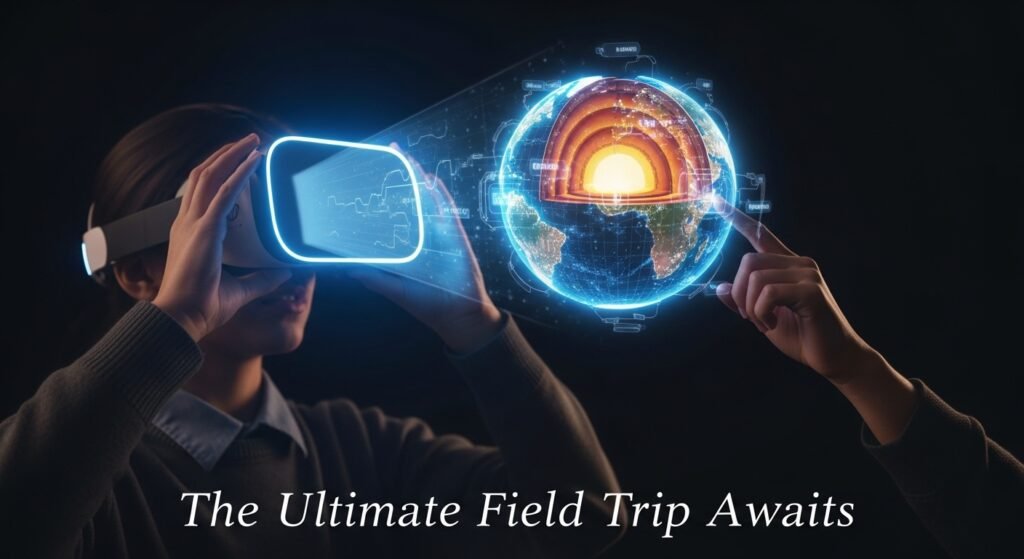
Conclusion: The World’s Greatest Holodeck
The Earth itself is the greatest holodeck we could ever imagine, filled with incredible and powerful systems. For most of human history, we could only study these systems from the surface. However, Virtual Reality has given us a key, allowing us to unlock the planet’s deepest secrets and explore its most dynamic forces.
Ultimately, it’s changing how we learn about our world, transforming students from passive observers into active explorers. By providing a deeper, more intuitive connection to the geological forces that shape our lives, these immersive experiences don’t just create better students; they create more informed and engaged citizens of a truly dynamic planet.
If you could use Virtual Reality to visit any geological hotspot on (or in) the Earth, where would you go first? The Mariana Trench, the heart of Mount Fuji, or the Mid-Atlantic Ridge? Share your dream expedition in the comments below!
Essential Climate Change Education for Students
AI Study Tips for High School to College Transition | Boost Learning in 2025

